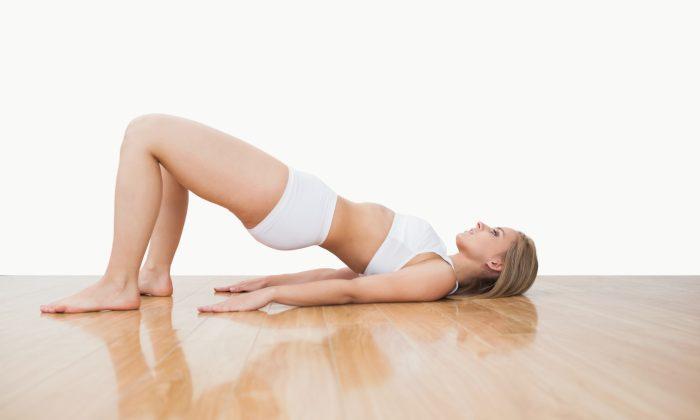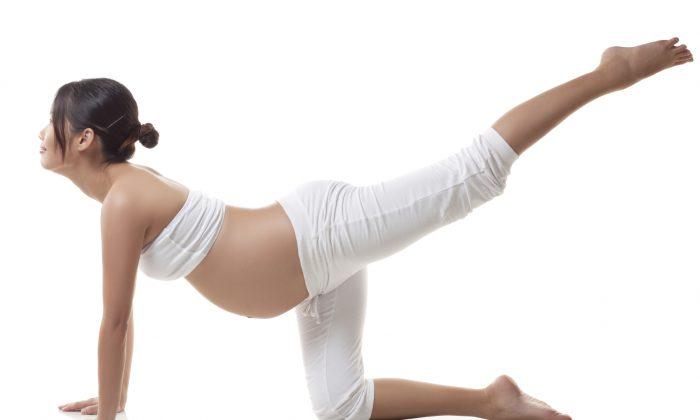The cerebellum in the part of the brain responsible for motor control. The motor control system is responsible for our stability, balance, posture, coordination, and perception.
The gluteus maximus (buttocks) is the largest and most powerful muscle in the body and a core stabilizer. In many cases, it tends toward inhibition, which means that its neurological connection to the motor control system (the cerebellum in the brain) is not optimal. When there is a neurological disconnect, the inhibited muscle does not fire (turn on or engage) quick enough.
If the glutes are not properly in sync with the motor control system, a myriad of problems can occur.
For example, runner’s knee, plantar fasciitis, shin splints, Achilles tendinitis, sacroiliac joint dysfunction, lower back pain, and other injuries can all be caused by an underlying gluteal dysfunction.
Causes of Inhibition
Certain sports, like golf, that involve highly asymmetric activities can also cause inhibition of the glutes.
Another factor that can lead to inhibited gluteal muscles is a sedentary lifestyle. Excessive sitting can cause the hip flexors (muscle group opposite to the glutes) to become short and overactive, thereby inhibiting the glutes. We need to have a balance between opposing muscle groups, so that one group does not inhibit another.
Movement and posture are also affected by our emotional state. Martha Graham, modern dance pioneer and lifelong student of bodily motion, was forever impacted by the comment her father made to her when he caught her in a lie as a young girl: “Movement never lies,” he told her.
If a person is depressed, they will tend to curl over and pull their shoulders forward, while a more happy person will tend to stand more upright with confidence. These postures affect our neuromuscular system and our everyday movement.
As a result of emotion, posture, injury or daily activity, a person may start to bend forward into flexion at the hips so that their torso is not fully upright. In this posture our glutes will not be able to engage often enough since they are responsible for extending the hip.
Relearning Movement Patterns
In order to move, our brain sends neurological signals through the spine and movement is achieved through the coordination of systems and muscle patterns, rather than individual muscles acting in isolation. Thus a before you work on the strength of you glutes, you need to establish a solid neurological connection with your brain.
If we start to build strength but don’t establish a strong connection, we may develop or reinforce movement patterns that are less than optimal because our bodies will do whatever they need to complete a given task, including creating dysfunctional movement patterns.
Especially if we have had an injury, we may have asymmetries and compensation patterns because pain causes the body to alter movement as protection. Depending on the particular injury and rehabilitation process, once the pain subsides and the injury heals, the body’s muscle memory may have already stored compensatory movement patterns that are less than optimal.
This is why it is important to re-learn proper movement patterns when recovering from an injury.
To optimally activate the gluteal muscles, the right neuromuscular connection should be restored, before the muscles are strengthened.
The following exercise program is only a guideline to help restore and strengthen the gluteal muscles. During the restoration process, the body can easily return to its previous pattern if the exercise or activity is progressed too fast. So if you have an injury and suspect inhibited gluteals, I highly recommend seeking the help of a qualified professional so they can determine what is causing the inhibition and correct it properly.
Strengthening the Connection
Heel Press
1. Lie on your back with your knees bent and feet flat on the floor, in one line with the hips, knees, and ankles.
2. Press your heel to the floor and concentrate on the strength of the contraction in the glutes.
Try this one side at a time first and notice if there is any difference in strength. If you feel the calves working too much, lift the toes up and press only the heels to the floor.
Pelvic Curls
1. Lie on your back with your knees bent and feet flat on the floor, in one line with the hips, knees, and ankles.
2. Begin engaging the buttocks as above in the Heel Press. Then bring the pubic bone to the sky and continue to roll up sequentially through your spine onto your shoulders.
Make sure you are engaging your abdominals so you do not arch your lower back.
3. Roll down to the starting position from the top of the spine. Be careful not to tense up your shoulders and neck.
Optional progression: Try this exercise with one leg extended to the ceiling with a flexed foot. As you lower your hips, pull the knee of the extended leg to the chest. Then press the hips back up, while pressing the heel of the extended leg back to the ceiling.
Integrating the Pattern
Deadlift
1. Stand tall with the arches of your feet lined up with the outside of your hips. Engage your glutes and legs by performing a “corkscrew” action, engaging the muscles of the legs while maintaining your feet in a firmly planted position. Hands can be behind the head to help keep the spine upright.
2. Flex at the hips by sending them straight behind you. This is the hip hinge, an important function for bending properly. As you continue to send the hips back in space, using this hip hinge, maintain the torso in one place. Eventually you should become parallel to the floor, maintaining a flat back position, rather than collapsing and rounding the spine.
3. Re-engage the glutes and legs by pressing the hips forward to bring the torso back to the upright starting position.
Optional progression: Use a kettlebell or weighted bar maintained close to the body. Once you are able to perform cleanly, progress to the single leg deadlift.
Lunge
1. Step out with one leg—far enough that when you descend, your knees bend at a 90-degree angle and do not move forward beyond the ankles. Keep your hands behind your head and your torso vertical.
2. As you descend, the back heel will lift and the back knee will lower straight down until it almost touches the floor. Make sure the knees do not push inward, toward the midline of the body, but remain in line with the hips and ankles. Also make sure the hips remain on the same plane.
3. To return to the starting position, press down through the front heel to re-engage the glutes.
4. Repeat for the desired amount of reps and then switch sides.
Optional progression: Add torso rotation toward the front leg, while maintaining a stable base. Make sure the arms move in opposition to the lower body just like in gait.
Single Leg Step-ups
1. Start with one leg up on a step and the opposite arm forward. Make sure the hips, knees, and ankles are aligned and the hip of the lead leg is not hiked up.
2. Press down into the heel of the lead leg and step up to balance. As you are stepping up, move the rear leg forward with the knee bent at 90 degrees. Allow the arms to switch naturally so they are in opposition to the lower body. This will help with balance.
3. Stay tall as you send the leg that is up back down to the starting position.
4. Repeat for the desired amount of reps and then switch sides.
Optional progression: If you do not have shoulder issues, try holding a kettlebell firmly overhead in the arm opposite to the leg that is lifting up. Keep the arm in a neutral position throughout the exercise. The arm should make a straight line over the body. It is imperative that the spine remains in a neutral position.
Ashley Whitson is an ACE-certified personal trainer, Pilates certified instructor, pre/postnatal exercise specialist, Functional Movement Systems professional, Neurokinetic Therapy practitioner, and professional dancer in New York. www.ashleywhitsonpersonaltrainernyc.com



